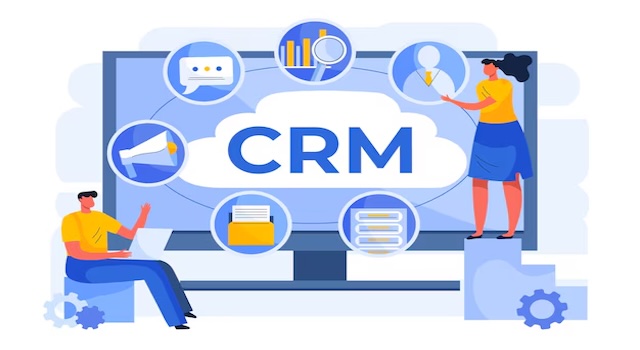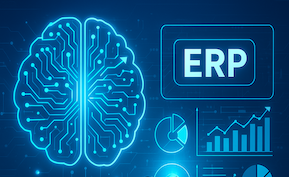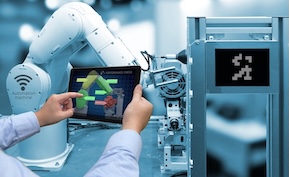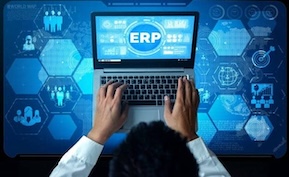CRM
CRM Integration with IoT & Wearables: Turning Device Data into Customer Insights

IoT- and wearable-integrated CRM connects real-world device signals—usage, location, health metrics, telematics—directly to customer profiles. The result is a living CRM that powers proactive service, hyper-personalization, and recurring revenue models based on actual behavior, not guesswork.
Why connect IoT & wearables to your CRM?
- Proactive support: Trigger service cases before failures occur based on sensor anomalies.
- Personalized engagement: Tailor offers and messages using real usage and context (time, place, condition).
- Usage-based pricing: Enable subscriptions and pay-per-use plans with automated billing.
- Closed-loop feedback: Feed device outcomes into marketing and product roadmaps.
High-impact use cases
- Connected products: Appliances, tools, or EV chargers signaling maintenance needs directly to CRM Service.
- Telematics CRM: Fleet sensors update account records with mileage, fuel, and safety events for upsell timing.
- Health & wellness wearables: Consent-based metrics inform care-plan reminders and coaching in Healthcare CRM.
- Smart buildings & energy: HVAC and meter data drive efficiency recommendations and contract renewals.
- Retail experiences: Beacons or wearables trigger in-store assistance and loyalty rewards in real time.
- Industrial IoT (IIoT): Machine vibration and temperature streams open preventive maintenance cases.
- Insurance & warranties: Device data validates claims, nudges safe behavior, and adjusts coverage.
- Sports & fitness: Performance telemetry powers community challenges and premium content offers.
Reference architecture
- Device layer: Sensors, gateways, wearables (BLE, LoRaWAN, NB-IoT, LTE/5G).
- Ingestion & stream processing: MQTT/HTTP → cloud IoT hubs (e.g., AWS IoT Core, Azure IoT Hub, Google IoT Core alternatives) and streaming (Kafka, Kinesis, Event Hubs).
- Transformation & rules: Real-time processors apply thresholds, anomaly detection, and enrichment (customer, asset, geodata).
- CRM integration: iPaaS/webhooks/REST map events to CRM objects (Contact, Asset, Case, Opportunity, Usage).
- Activation: CRM automations launch journeys, create work orders, or initiate billing.
- Analytics: BI and customer 360 dashboards visualize cohort usage, health, and LTV.
Data model essentials
- Asset/Device object: Serial, firmware, location, owner, warranty/contract.
- Usage/Telemetry object: Timestamped metrics linked to asset and account.
- Health score: Composite indicator (uptime, error rate, battery life) for alerts and prioritization.
- Consent & privacy fields: Scope, purpose, retention, and revocation status.
Top platforms & tools
- Salesforce: Service Cloud + IoT orchestration (or Flow), Asset & Case objects, Field Service for dispatch.
- Microsoft Dynamics 365: Connected Field Service, Azure IoT, and Power Platform for low-code orchestration.
- HubSpot: Webhooks + custom objects + iPaaS (Make/Workato) for lightweight IoT use cases.
- Zoho CRM: Creator + Flow + custom functions to ingest MQTT/REST and map to CRM entities.
- iPaaS/Integration: MuleSoft, Boomi, Workato, Tray.io for event mapping and data hygiene.
Security, privacy & compliance
- Consent-first design: Store explicit consent for each data category (vital signs, location, telemetry).
- Least-privilege access: Limit device data visibility by role and purpose.
- Tokenization & encryption: Encrypt in transit (TLS) and at rest; rotate keys and device credentials.
- Data minimization & retention: Keep only necessary metrics; auto-expire raw streams.
- Edge filtering: Redact or aggregate sensitive values before cloud/CRM ingestion.
Implementation roadmap
- Define outcomes: Pick 1–2 clear wins (e.g., reduce MTTR by 25%, increase renewal rate by 8%).
- Map events to actions: For each device signal, define the CRM object and automation it should trigger.
- Pilot with a narrow cohort: One device family, one customer segment, one region.
- Harden integration: Add retries, dead-letter queues, idempotency keys, and schema versioning.
- Scale & monetize: Introduce usage-based pricing, predictive maintenance SLAs, and premium support tiers.
KPIs to track
- Time to case (event→case): Latency from anomaly to service ticket.
- First-time fix rate: Lift driven by IoT diagnostics attached to the case.
- Renewal/expansion rate: Impact of proactive service on ARR/NRR.
- Churn reduction: Improvement in device-backed customer health.
- Uptime & SLA compliance: Contractual performance tied to telemetry.
Common pitfalls (and fixes)
- Dirty or noisy data: Validate payloads, apply smoothing, and quarantine suspect devices.
- Event floods: Use rate limits, batch windows, and priority queues.
- Identity mismatches: Maintain a golden device→account mapping with MDM/MDG governance.
- Privacy missteps: Implement granular consent and clear opt-out flows in portals.
SEO-friendly FAQs
What is IoT CRM? It’s a CRM strategy that ingests device and wearable data to automate service, personalize marketing, and inform product decisions.
How do wearables improve CRM? With consent, wearables provide contextual signals (activity, location, usage) that drive timely, relevant outreach.
Which industries benefit most? Manufacturing, healthcare, utilities, transportation, retail, and insurance see strong ROI from IoT-integrated CRM.
Is IoT data secure in CRM? Yes—when paired with encryption, consent controls, least-privilege access, and strict retention policies.
Bottom line
Integrating IoT and wearables with CRM turns passive records into real-time customer intelligence. By translating device signals into service, marketing, and revenue actions, brands deliver proactive experiences that customers notice—and pay for.






